On August 8 I photographed a Turkey Vulture taking off and in flight in a remote area of northern Utah. The next day I posted a single photo of that bird, taken as ‘he’ was lifting his wings in preparation for launch. Today I’ve decided to post the entire series of eight photos, in sequence and without any skips.
Some are better than others and those that are flawed will be obvious to the viewer. But readers know that I’m a fan of seeing the mechanics of takeoff and flight in my photos and even flawed photos can contribute to that goal, so today you get the good with the not so good.
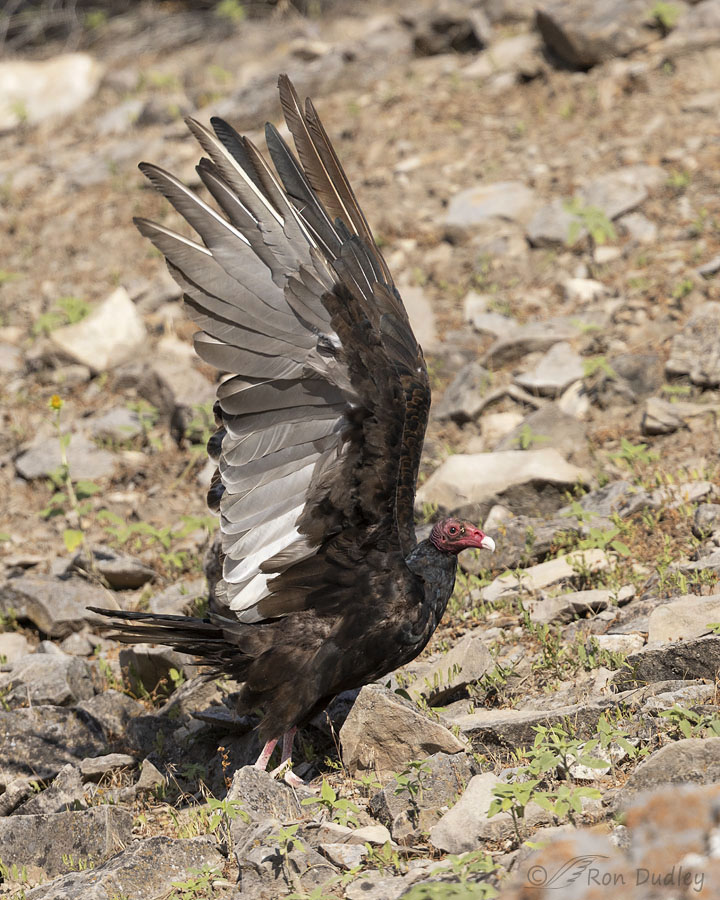
This is the shot I posted two days ago. I’m including it again because it contributes to the series.
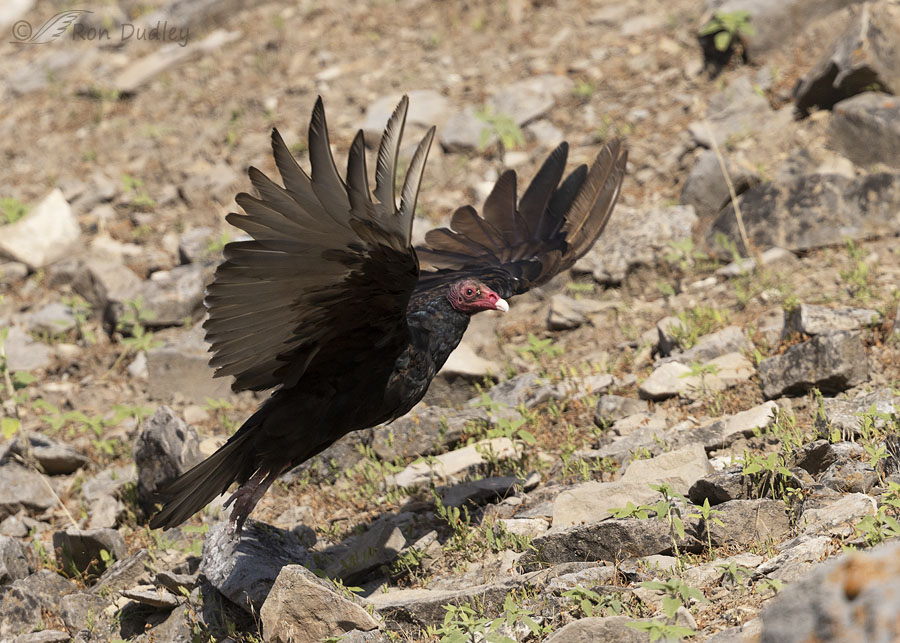
These photos were taken 2 1/4 hours after sunrise so with the sun that high in the sky, and with the position of his right wing, much of his body is in deep shade with little detail.
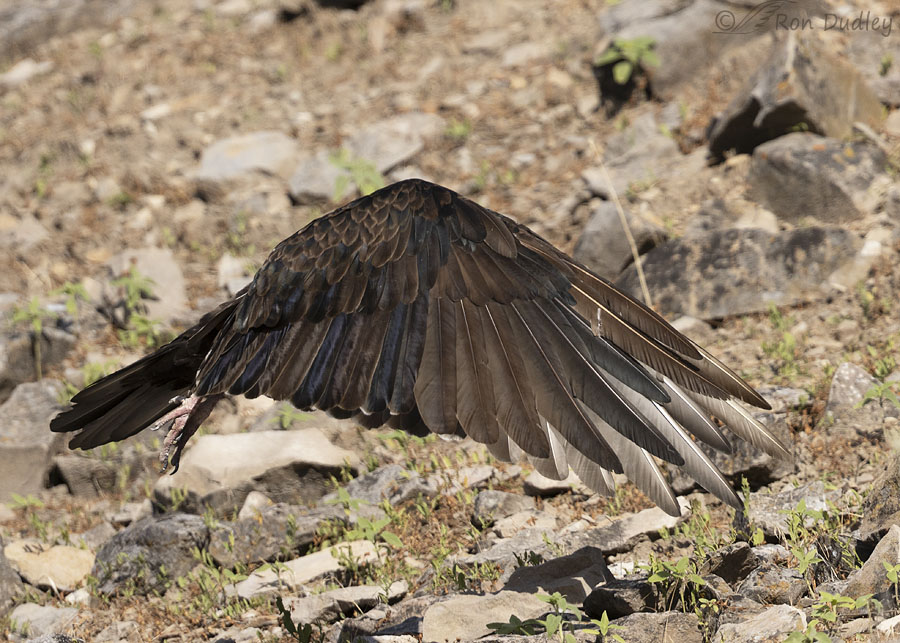
In a series like this, at least one photo with the bird’s head entirely hidden is almost inevitable. I’ve cropped more tightly on the bird in this shot in order to avoid cutting off his shadow on the rocks below him.
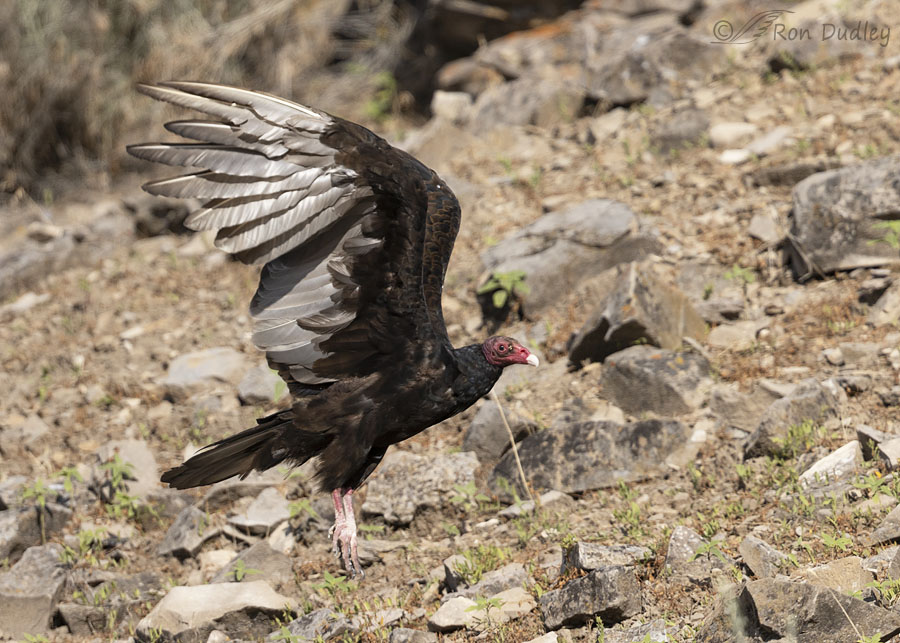
Another good look at the distinctive “pale trailing edge” of the wings of Turkey Vultures.
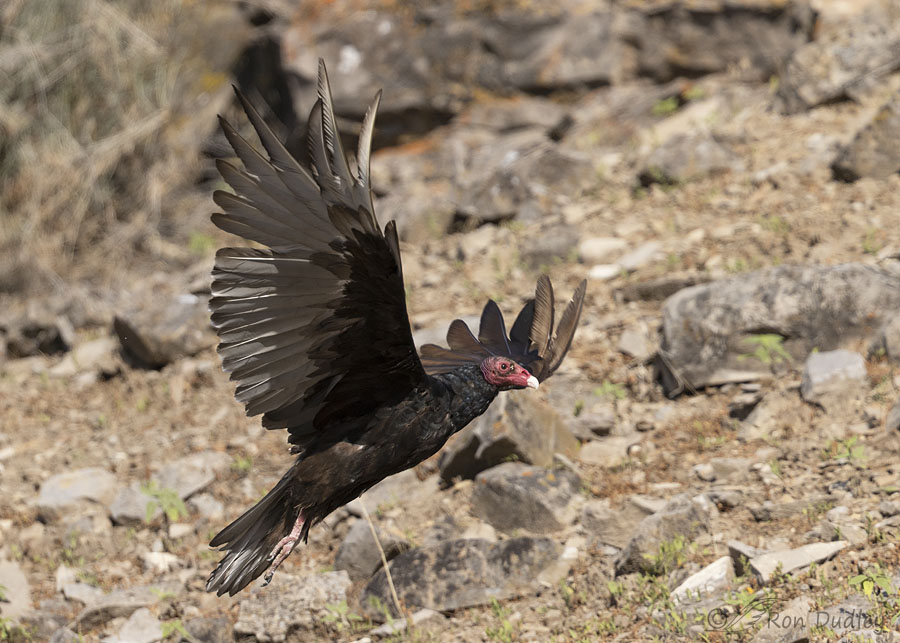
Here his body is at a steep angle in an attempt to gain elevation quickly and avoid the jagged rocks on the hillside in front of him.
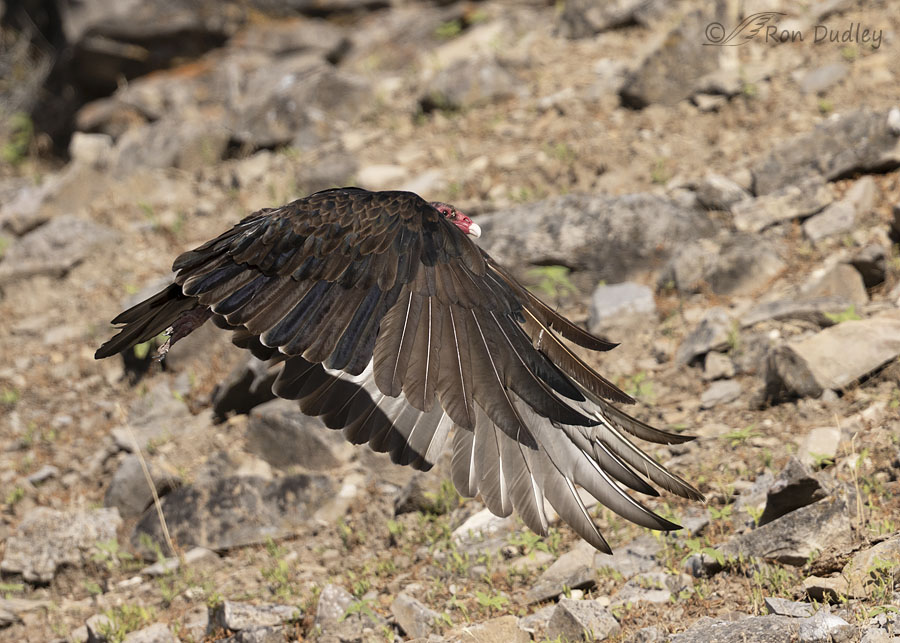
At this point it appears that he’s beginning to veer to his left and away from me but if that was the case he…
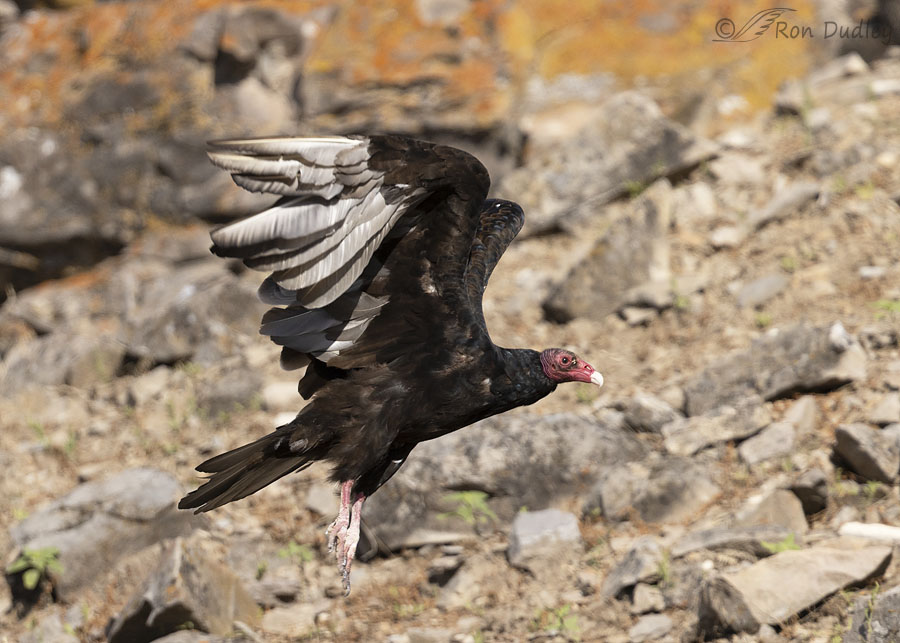
straightened out pretty quickly – probably to avoid the rocks.
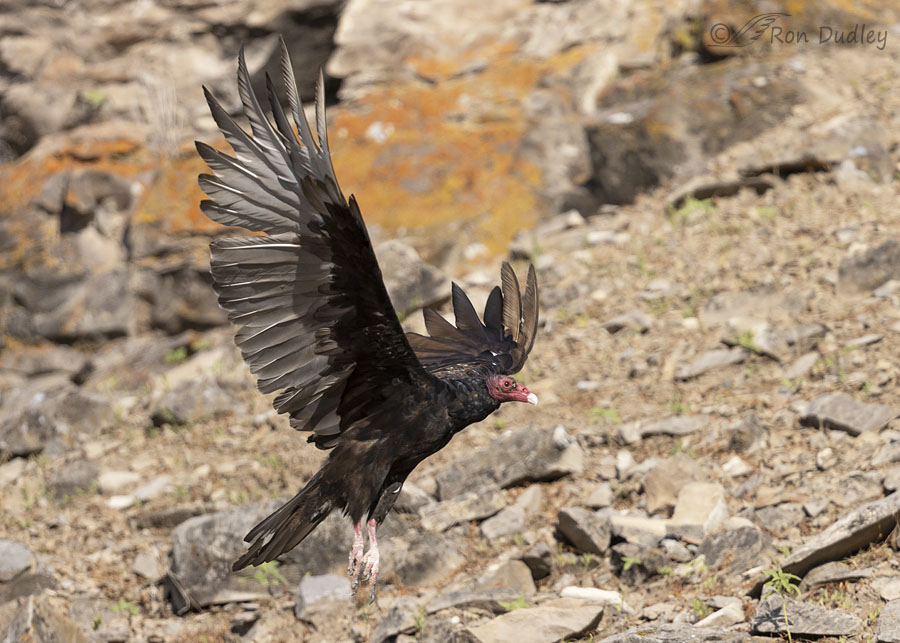
This is the last shot I got before I lost focus on him. With the background so close my active focus point grabbed onto it instead of the bird. I kept trying to reacquire focus but it didn’t happen.
When I’m photographing dark or black birds that seems to happen more often than it does with light colored birds. One of the many vagaries and frustrations of bird photography.
Ron
Note: Image techs for these photos are at or near 1/4000, f/5.6, ISO 500, Canon R5, Canon EF500mm f/4L IS II USM + 1.4 tc


I was once in a bird refuge in Patagonia where the wind was so intense that the movements of the birds wings were slowed down when they flew up from the ground. It was glorious. This series reminds me of that moment. Your photos and text are joy nuggets.
Thanks very much, Pat.
I love this series! What fantastic photography that captures an awesome bird!
Thank you, Jo.
Fascinating. The power in those huge wings…
Thanks, EC.
After studying each photo individually, it’s neat to scroll thru quickly and get the sense of movement. And also to track the shifting placement of the rocks as he moves along.
So many feathers, each with a specific purpose – echoing Michael’s comment.
“it’s neat to scroll thru quickly and get the sense of movement”
Carolyn, you should see what I see when I’m quickly reviewing my images in my organizer. It’s almost like watching a movie on my screen.
Those wings are magnificent! Love each shot – together they provide such detail of those magnificent wings.
Thank you, Kathleen.
I like that you are more interested in having us learn things about the birds and nature you show rather than just exhibiting world class photography.
I see them here often and have always thought they have such beautiful wing spans. And thanks for the info on the pale trailing edge, I was never aware of that. I have always had excellent long range vision and always knew what they were high up in flight just by their heads.
Excellent series.
I guess it’s the teacher in me, Everett. And old habits… 🙂
Spectacular! So amazing how these huge birds can get themselves aloft — I can almost feel the air currents generated by those magnificent wings. I also like being able to see where the same primaries are growing in on each side. Definitely a wall-worthy series!
Much appreciated, Marty.
Wonderful series, Ron! 🙂 If you couldn’t see his head one would think it was an eagle! 😉 Beautiful, rich, colors – can tell those wings are made for soaring…. Guessing the camera says “oh, you wouldn’t want that dark spot to be your focal point so……..” 😉
Judy, it’s my theory that I lose focus in that situation as often as I do because of a lack of contrast between a dark bird and a relatively dark background. When the background is light sky it doesn’t happen so often, even with dark birds.
I’m glad that you re-posted shot #1– those glorious wings ! I’m
guessing that such huge wings favor gliding at great heights
while searching for “customers” to service ?
I’m thinking you’re right, Kris.
Number 2 gives me a wonderful sense of what it feels like to have wings.
I see what you mean, Sallie.
You capture such beautiful moments with your photography.
Take Care and Thank You,
Kaye
Thanks, Kaye.
A small bird launching from a perch is a wonder, but a large bird doing so is just amazing.
I like these takeoff series. As I have mentioned before, it is very satisfying to be able to see the steps of the takeoff frozen in time and be able to enjoy a detailed view the wing feathers doing their job for more than just a split second.
Michael, it sounds as if you like series like this one for the same reason I do. And maybe you and I like them more than most folks do.